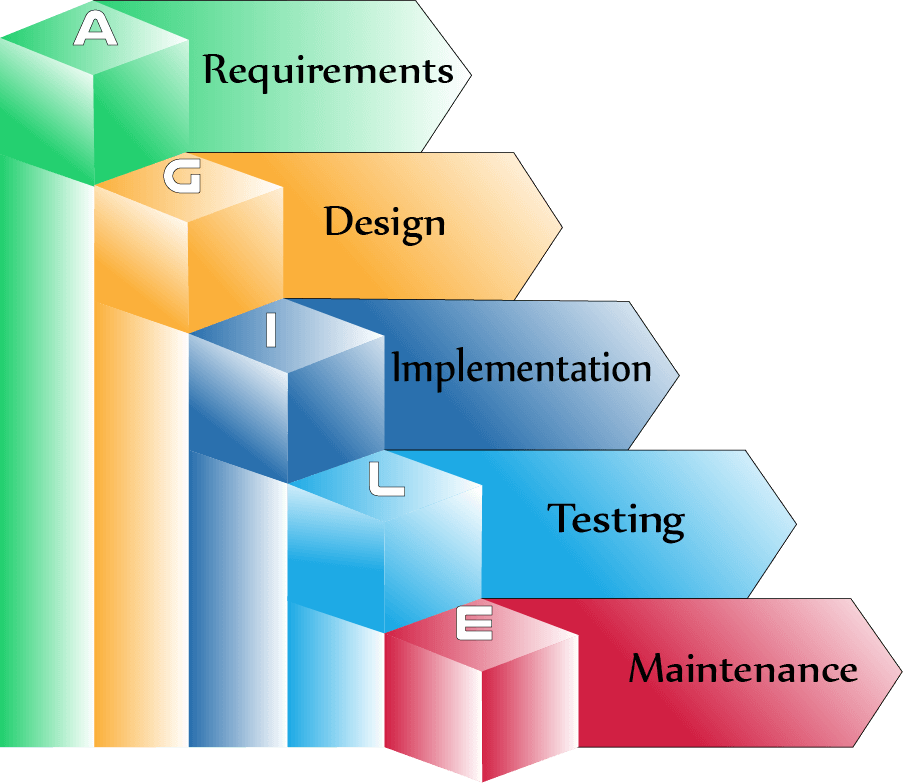Agile Methodology

What is Agile Methodology in simple terms?
Agile methodology is an iterative approach to the software development cycle. Ready to adapt to the changes in the development environment. So the ultimate success can be achieved on an uncertain and unstable environment.
Why agile methodology?
So to answer this question we have to learn about waterfall method.
What is waterfall method?
Software development life cycle. This method is followed in all software development companies around the world. And it contains phases like
- Requirement and analysis
- Design
- Code
- Test
- Deploy
- Maintain
So the development team has to follow the step by step procedure to finish the project. And the team can move to design phase only when the requirement phase is completely finished. So when your client ask to add some requirement into the project on the design phase, it is impossible for the team to go back. It is way too expensive to fix bugs and do alterations to the project code. So making waterfall method less effective.
Waterfall VS Agile methodology:
- When the software development cycle is going on.
- The client needs to add some changes.
- But the waterfall method it is not possible to go back in the process.
- So the team comes up with the idea called agile methodology.
- It is like dividing a big project into small parts and achieving the result with iteration.
- Client focused and improves communication within teams, so providing better result than waterfall method.
Reasons why we move from waterfall to agile methodology:
To rectify all the disadvantages we have found on the waterfall method we move on to agile methodology.
- Agile is a practice which helps continuous iteration of development and testing in the software development cycle.
- Agile calls for collaborative cross functional teams.
- Improve team communication, collaboration, trust and adaptation among the team members.
- Grows on feedback and continuous improvement cycle.
- Human interactions and solutions to customer problems are concentrated in Agil methodology.
Tools used in Agile Methodology:
- ActiveCollab
- Agilo for Scrum
- Atlassian Jira + Agile.
- Pivotal Tracker.
- Retrace
- Prefix
Advantages of Agile Methodology:
- Improved customer satisfaction
- Faster and smaller
- No rework
- Improve employee values
- Quality assurance.
- Reduces the risk in developmental cycle.
Agile Methodology steps
- Plan your target with your strategy team
- Build the project plan with name, date, goal, features and metrics.
- Release the project plan.
- Split the workload into small portions called sprints (short cycles of development).
- 15 minutes of daily stand up meeting.
- Sprint review.
- Discussing things and planning to add things which you missed in the previous sprint to improve the next sprint.
- Successful completion of target output.
Agile Software development model:
On simple terms we don’t have to follow the traditional software development cycle spending months and years on delivering the single product output. They deliver it fully and no one can add changes to the code if they wish to. So making it too costly and difficult to handle. And here comes agile methodology. And read below to know about the Agile Software development model. The agile creators follow the four principles or key values. They are:
- Individuals and interactions over processes and tools
- Working software over comprehensive documentation
- Customer collaboration over contract negotiation
- Responding to change over following a plan
Anyone who is planning to implement the Agile Principle they must know these 12 agile principles too.
- The highest priority is to satisfy the customer through early delivery
- Changing requirements are allowed, even late in development
- Frequently deliver software, from a couple of weeks to a couple of months
- Stakeholders and developers must meet on a daily basis
- Build projects around motivated individuals. Give them the environment with support they need.
- F-to-f meetings are the most effective format for project success
- A final working product is the ultimate measure of progress
- Agile processes promote sustainable development. The sponsors, users, and developers should be able to maintain a constant pace indefinitely.
- Give continuous attention to technical excellence and good design enhances agility
- Simplicity—maximizing the work notdone—is an essential element
- The self-organizing teams delivers best architectures, requirements, and designs.
- At regular intervals, the team reflects on how to become more effective, then tunes and adjusts its behavior accordingly
Conclusion:
For best results from agile methodology one should set priorities and it is owned by the head. And the small release on the product should be there for every two to four weeks on the conscience of stack holder. Practice pair programming to get high quality. Test driven development is needed to produce a greater employee engagement.
